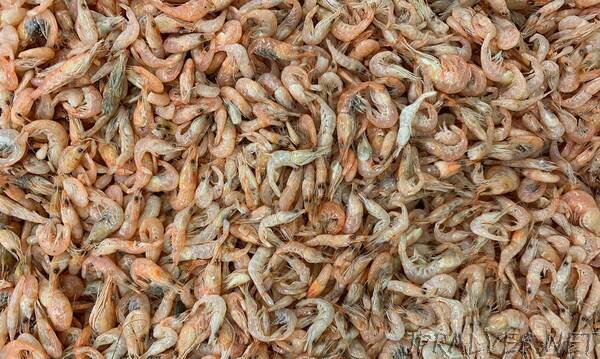
“Spanish researchers at MIT have developed a system to produce electrodes for vanadium flow batteries, used in renewable energy storage. The electrodes are made from chitin, a polysaccharide found in the exoskeleton of crustaceans and insects. The advantage of this component is that it contains nitrogen in addition to carbon, which is then incorporated into the structure of the electron during the production process, improving electrode’s performance.
A project by Spanish researchers, and other collaborators, at theMassachusetts Institute of Technology(MIT) suggests the use ofchitinfromshrimp shellsto produce electrodes for vanadium flow batteries. The results of the work have recently been published in theACS Sustainable Chemistry & Engineeringjournal.
The chemical engineerFrancisco Martín-Martínez, one of the authors, has explained to SINC that “vanadium redox flow batteries, unlike lithium batteries used in the automotive industry, do not provide a high energy density, but do provide a large volume of energy storage at low cost, which makes them ideal for storingenergy from renewable sourcessuch as solar and wind power, whose energy production is intermittent.”
Martín-Martínez, an expert in the development ofbio-inspired materials, points out that in order to facilitate theflow of electronsfrom one side of the battery to the other, carbon electrodes are usually used: “We have produced these electrodes from chitin, a material from shrimp shells. Chitin is apolysaccharide, similar to cellulose, which is found in the exoskeleton of crustaceans and insects.”Improved performance
The peculiarity of chitin – he says – “is that, in addition to carbon, it also contains nitrogen, which is incorporated into the structure of the electrode during the production process, improving its performance.” This parameter has been characterized in detail by the authors in the paper.
In fact, the team has proven the benefits of nitrogen in thechemical structureof the electrode, where it facilitates the transfer of electrons between from the vanadium ions. “Obviously, there are carbon electrodes that can yield a better performance, but the key to this project is to produce such electrodes from awastematerial, in this case chitin from shrimp shells,” points out Martín-Martínez.
Therefore, “its benefit not only relies in its good performance, but also in the low cost of the starting material, which makes electrodes more sustainable, given the reuse of waste,” he adds.
At present, electrodes of this type are principally made from carbonised polyacrylonitrile, a synthetic polymer, so its production from a waste product such as chitin is, in the opinion of this researcher, “a more sustainable alternative.”
The researcher comments that “these electrodes from shrimp waste could also be applied insupercapacitors, electrochemical devices that provide a very high energy density, and even in desalination processes, “although we have focused on vanadium redox flow batteries,” he clarifies.
An idea by three Spanish colleagues at MIT
The project to obtain electrodes for large storage batteries from chitin in shrimp shells was the result of a initial collaboration between three Spanish researchers working atMITwho now work separately in various European institutions.
One of them isAntoni Forner-Cuenca, who worked on vanadium redox flow batteries andnow leads his own research grouponporous materialsfor electrochemistry at the Eindhoven University of Technology (The Netherlands).
Another of them is Diego López Barreiro, who was in the same department as Francisco Martin-Martinez at MIT, developing materials frombiomass waste. Now, he is awarded a Marie Curie Fellowship at the DSM Biotechnology Centre (The Netherlands) where he is researching the use of structural proteins inbiomedicine materials.
Martin-Martinez continues to be a research affiliate at MIT and now runs his own laboratory, dedicated to the computational design ofnature-inspired nanomaterialsat Swansea University (UK).”
